Making effective oral presentations 1. Overcoming the fear

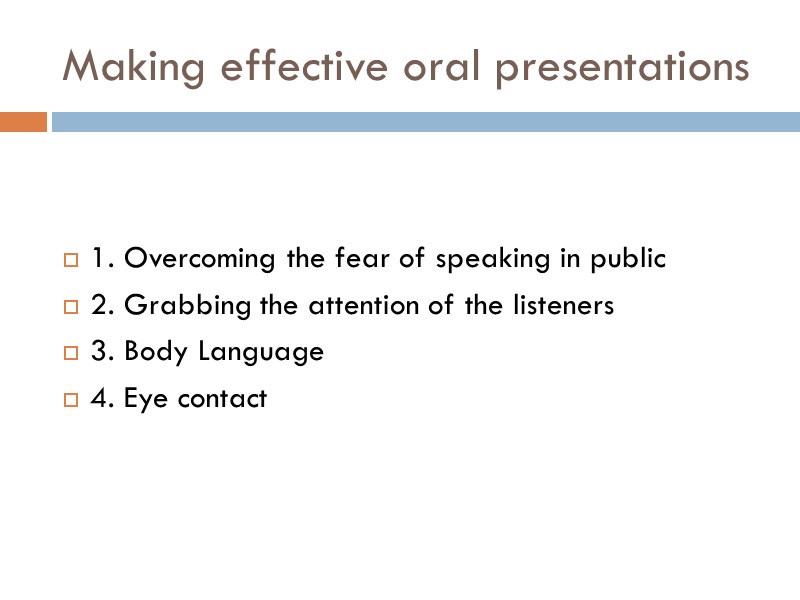

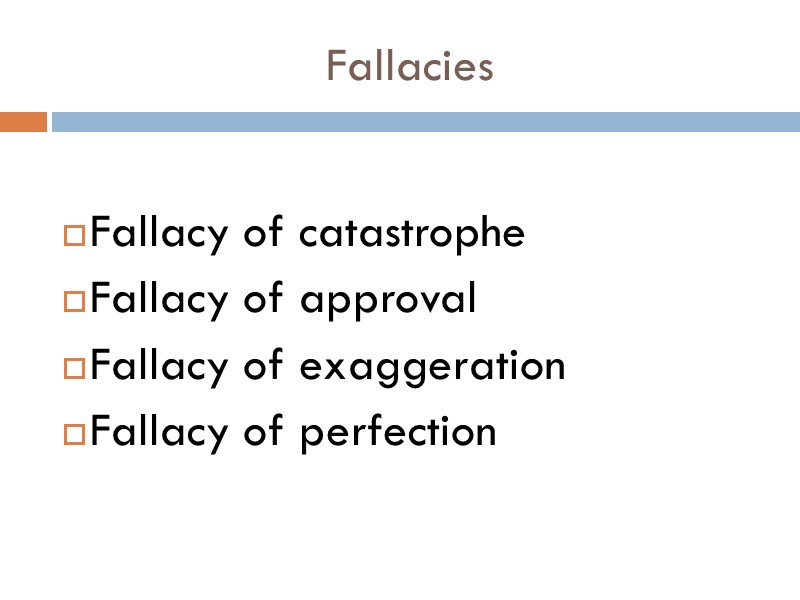
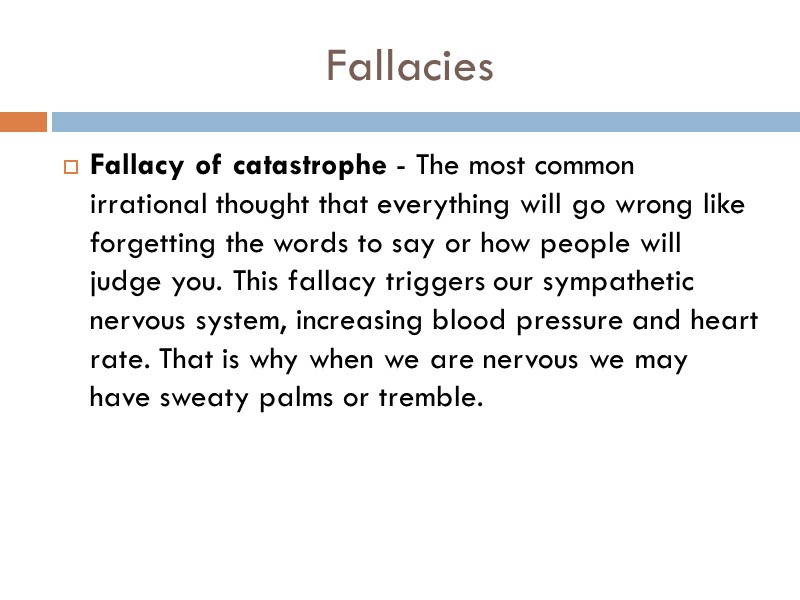
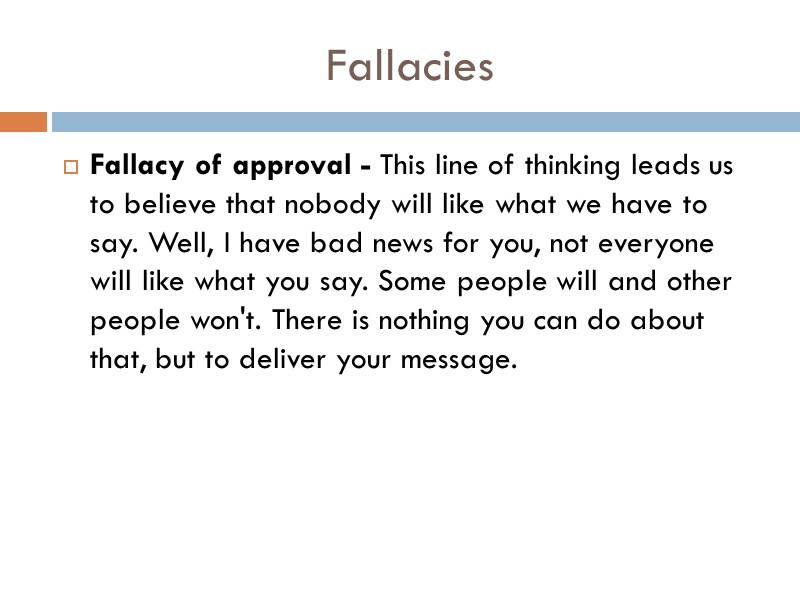
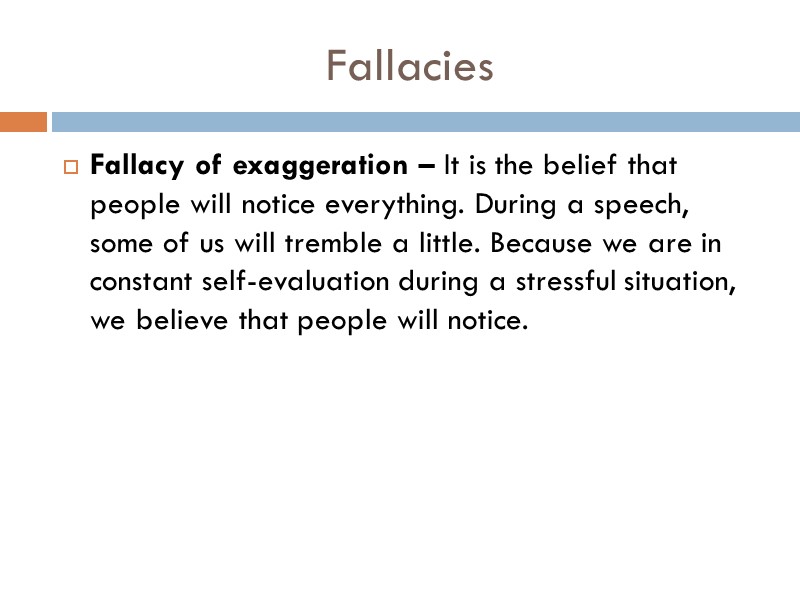
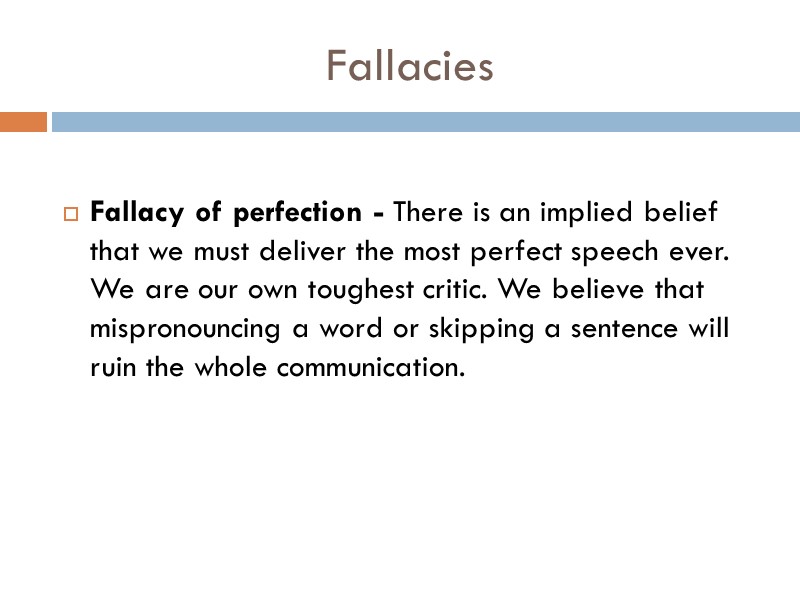
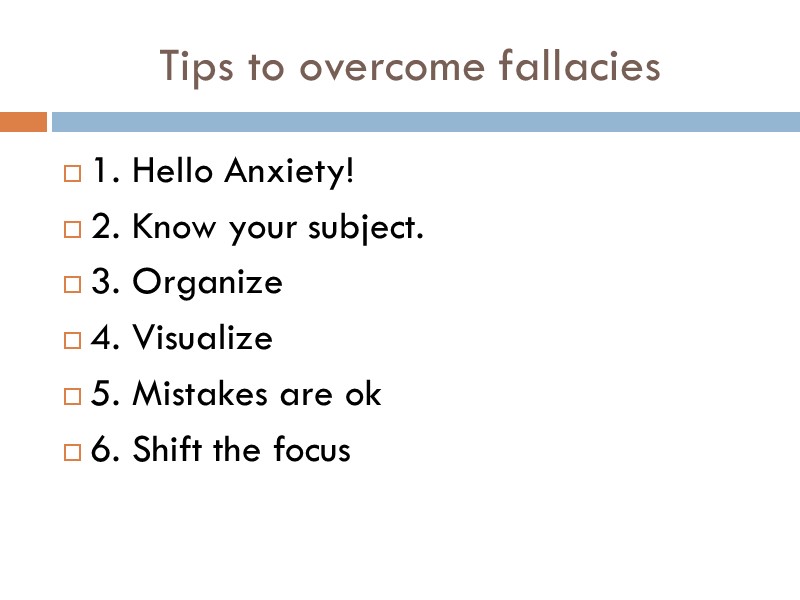
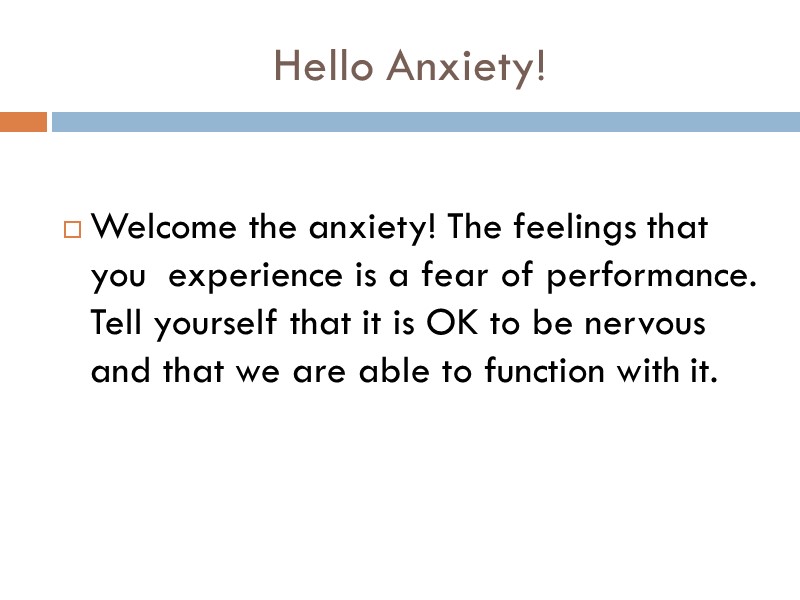
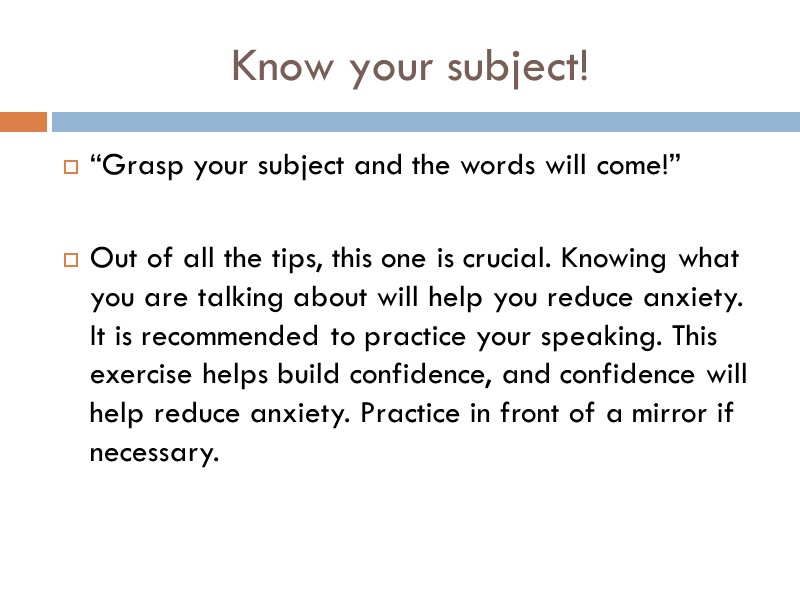
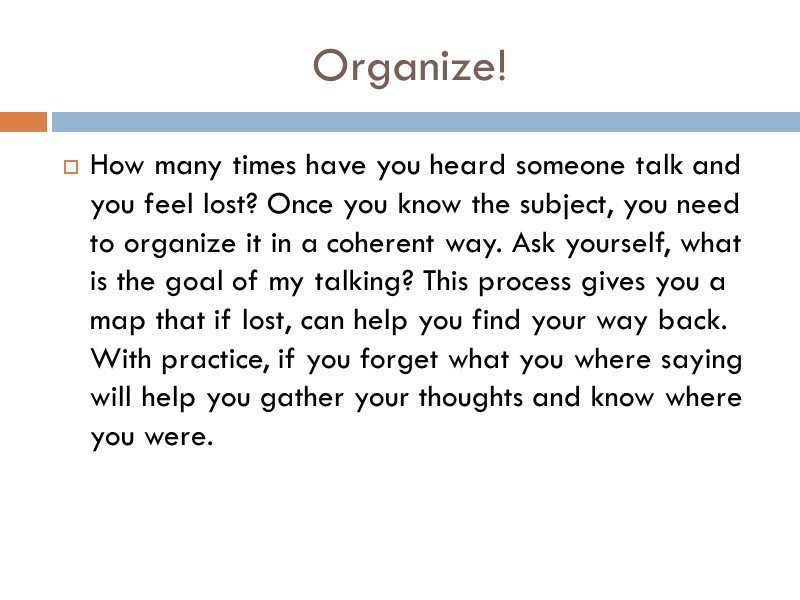
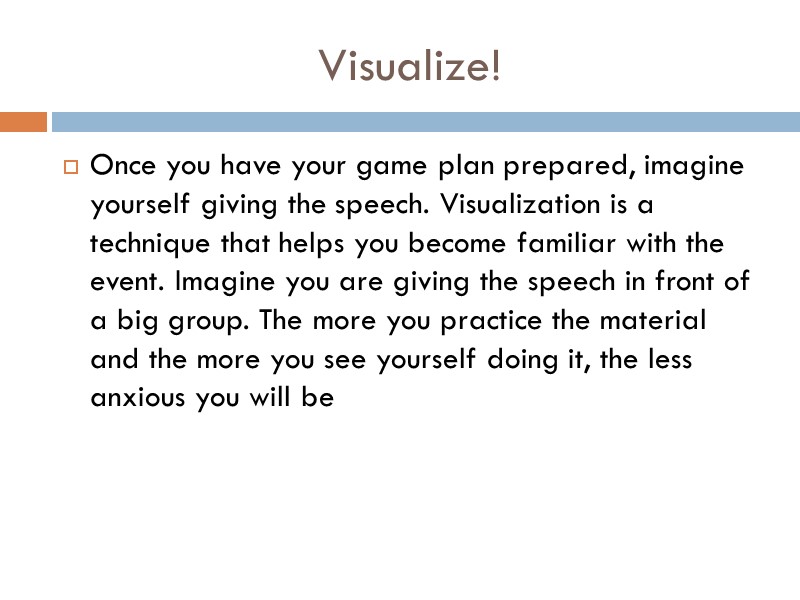
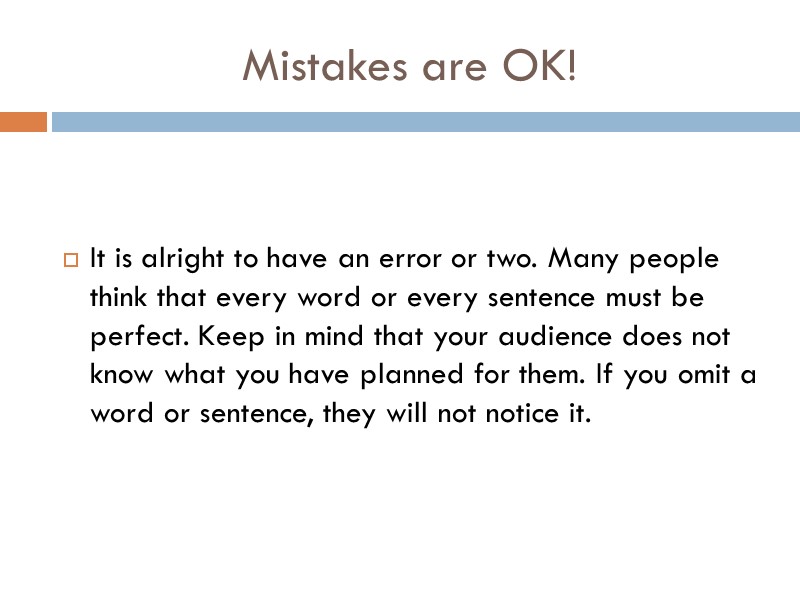
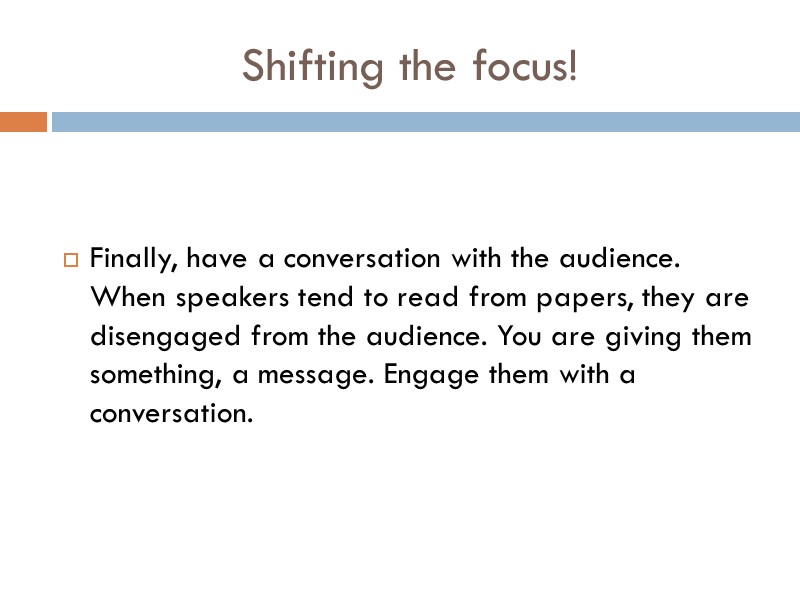
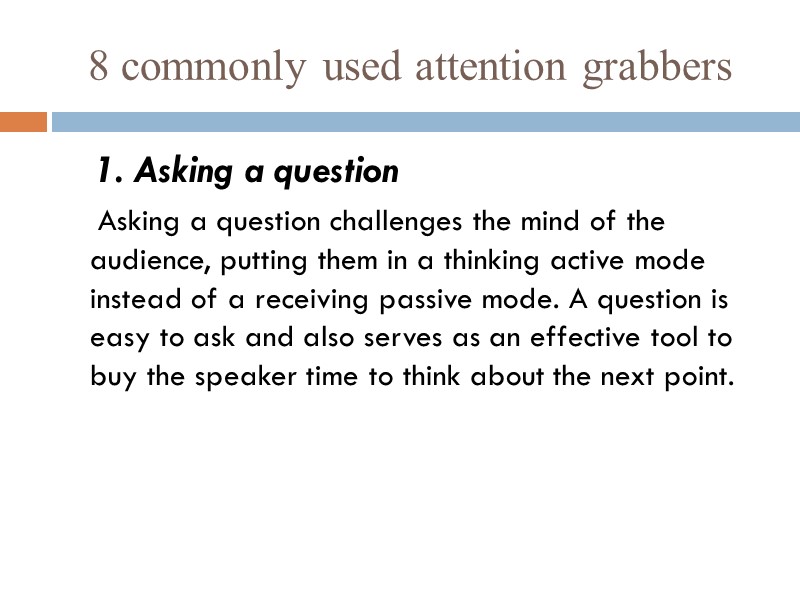
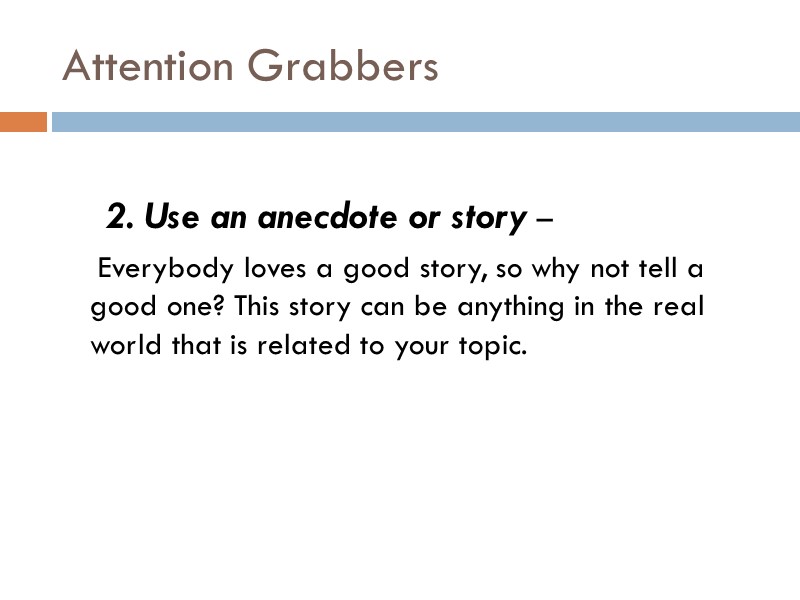
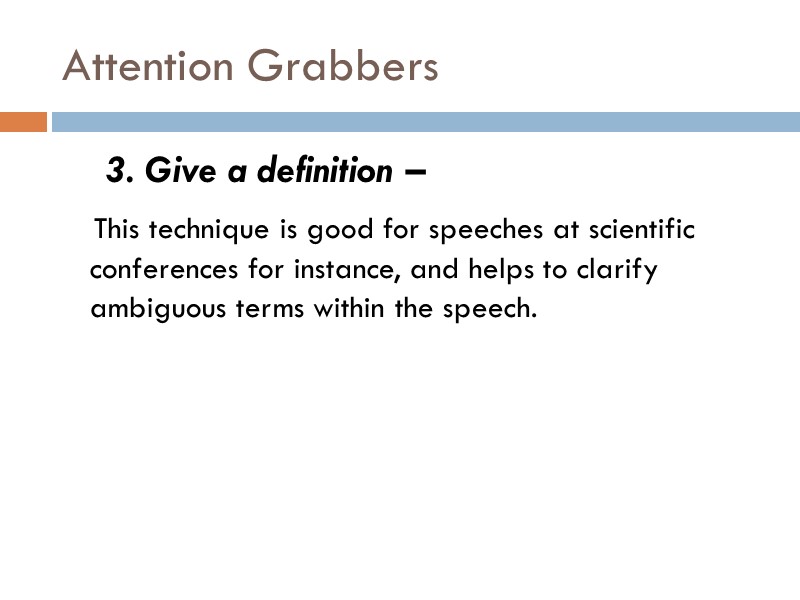
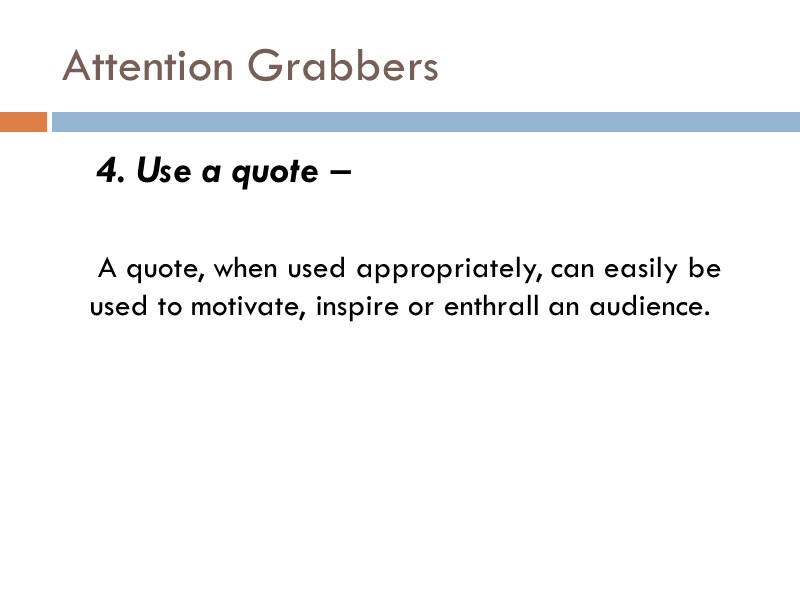
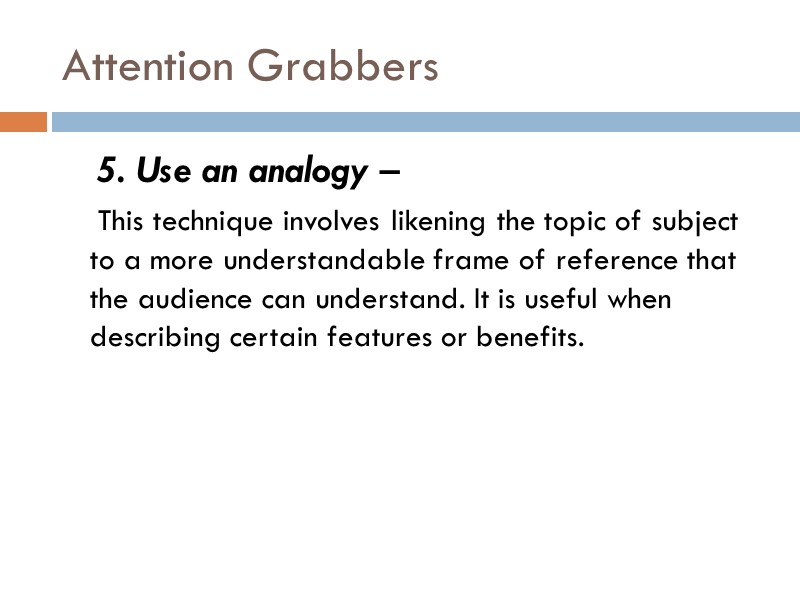
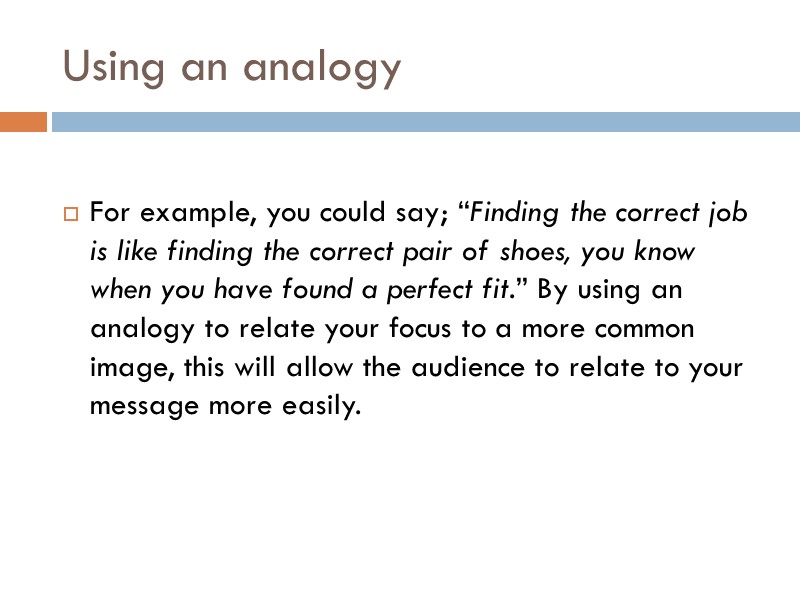
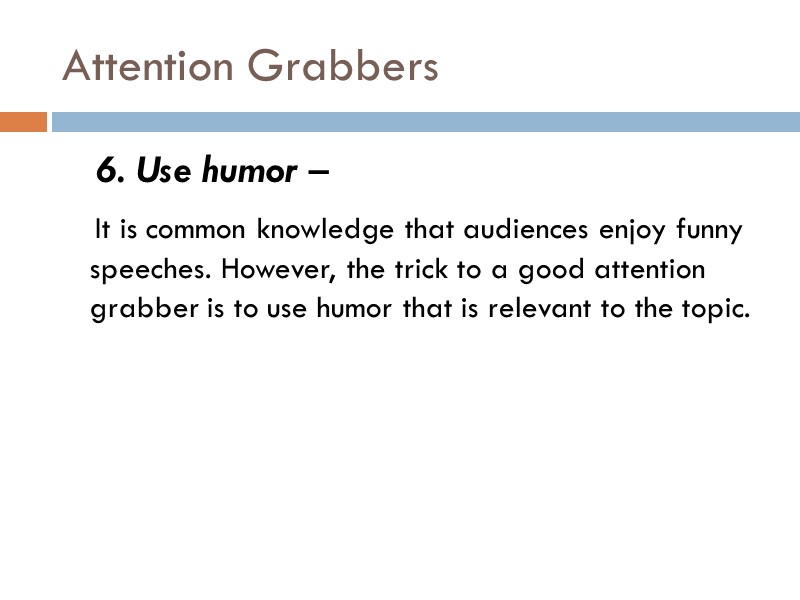
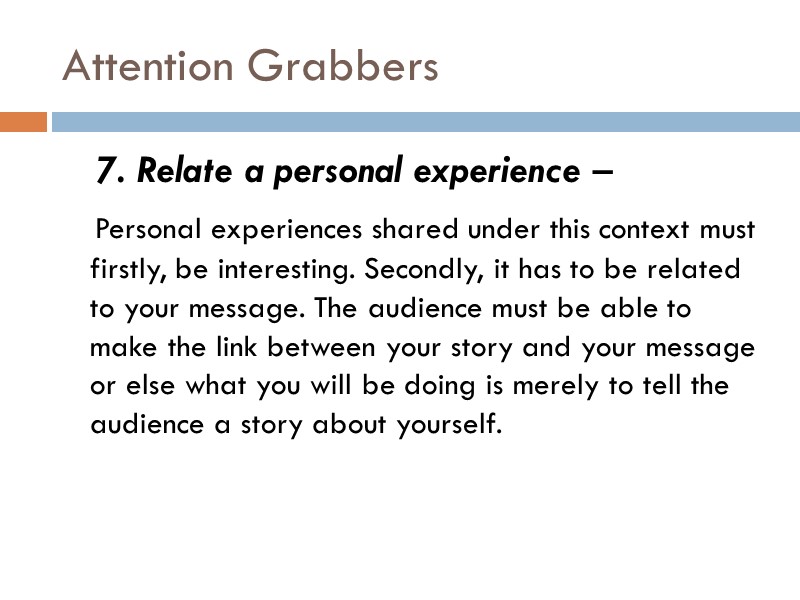
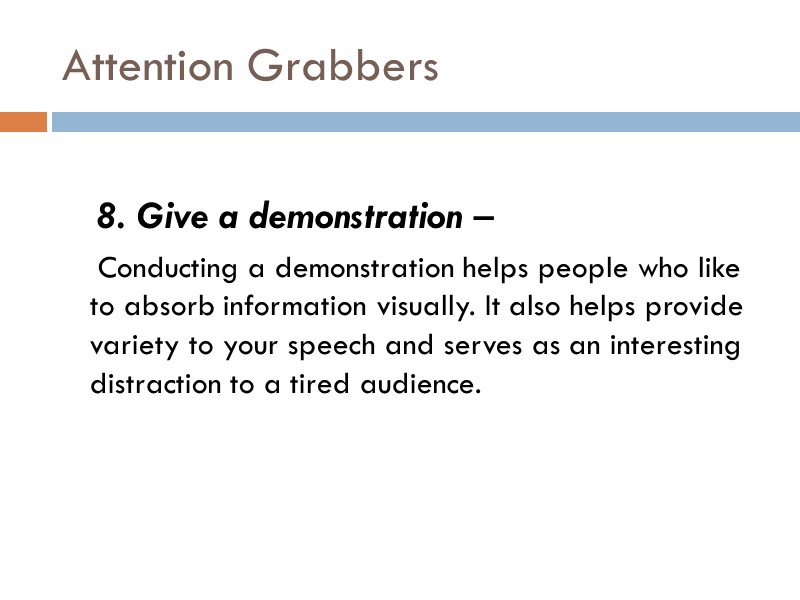
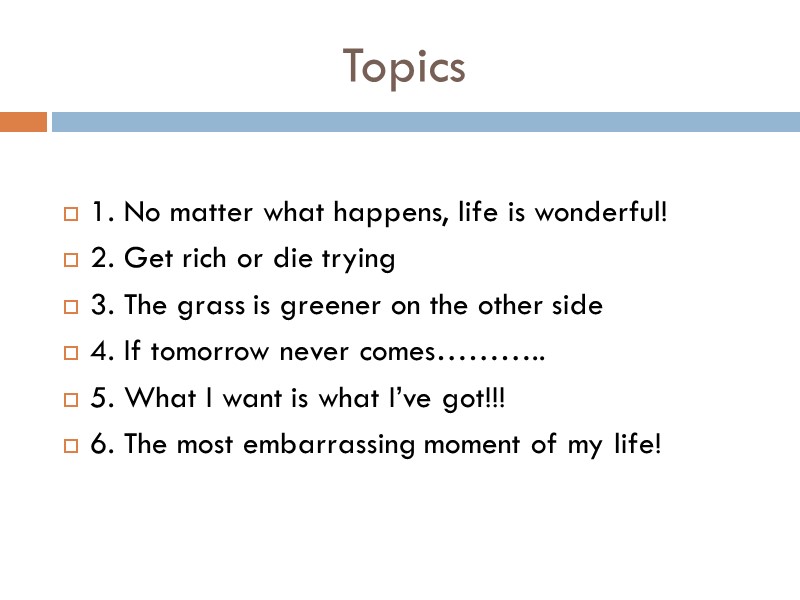
40736-first_lecture.ppt
- Количество слайдов: 24
 Making effective oral presentations 1. Overcoming the fear of speaking in public 2. Grabbing the attention of the listeners 3. Body Language 4. Eye contact
Making effective oral presentations 1. Overcoming the fear of speaking in public 2. Grabbing the attention of the listeners 3. Body Language 4. Eye contact

 Fallacies Fallacy of catastrophe Fallacy of approval Fallacy of exaggeration Fallacy of perfection
Fallacies Fallacy of catastrophe Fallacy of approval Fallacy of exaggeration Fallacy of perfection
 Fallacy of catastrophe - The most common irrational thought that everything will go wrong like forgetting the words to say or how people will judge you. This fallacy triggers our sympathetic nervous system, increasing blood pressure and heart rate. That is why when we are nervous we may have sweaty palms or tremble. Fallacies
Fallacy of catastrophe - The most common irrational thought that everything will go wrong like forgetting the words to say or how people will judge you. This fallacy triggers our sympathetic nervous system, increasing blood pressure and heart rate. That is why when we are nervous we may have sweaty palms or tremble. Fallacies
 Fallacy of approval - This line of thinking leads us to believe that nobody will like what we have to say. Well, I have bad news for you, not everyone will like what you say. Some people will and other people won't. There is nothing you can do about that, but to deliver your message. Fallacies
Fallacy of approval - This line of thinking leads us to believe that nobody will like what we have to say. Well, I have bad news for you, not everyone will like what you say. Some people will and other people won't. There is nothing you can do about that, but to deliver your message. Fallacies
 Fallacy of exaggeration – It is the belief that people will notice everything. During a speech, some of us will tremble a little. Because we are in constant self-evaluation during a stressful situation, we believe that people will notice. Fallacies
Fallacy of exaggeration – It is the belief that people will notice everything. During a speech, some of us will tremble a little. Because we are in constant self-evaluation during a stressful situation, we believe that people will notice. Fallacies
 Fallacy of perfection - There is an implied belief that we must deliver the most perfect speech ever. We are our own toughest critic. We believe that mispronouncing a word or skipping a sentence will ruin the whole communication. Fallacies
Fallacy of perfection - There is an implied belief that we must deliver the most perfect speech ever. We are our own toughest critic. We believe that mispronouncing a word or skipping a sentence will ruin the whole communication. Fallacies
 Tips to overcome fallacies 1. Hello Anxiety! 2. Know your subject. 3. Organize 4. Visualize 5. Mistakes are ok 6. Shift the focus
Tips to overcome fallacies 1. Hello Anxiety! 2. Know your subject. 3. Organize 4. Visualize 5. Mistakes are ok 6. Shift the focus
 Hello Anxiety! Welcome the anxiety! The feelings that you experience is a fear of performance. Tell yourself that it is OK to be nervous and that we are able to function with it.
Hello Anxiety! Welcome the anxiety! The feelings that you experience is a fear of performance. Tell yourself that it is OK to be nervous and that we are able to function with it.
 Know your subject! “Grasp your subject and the words will come!” Out of all the tips, this one is crucial. Knowing what you are talking about will help you reduce anxiety. It is recommended to practice your speaking. This exercise helps build confidence, and confidence will help reduce anxiety. Practice in front of a mirror if necessary.
Know your subject! “Grasp your subject and the words will come!” Out of all the tips, this one is crucial. Knowing what you are talking about will help you reduce anxiety. It is recommended to practice your speaking. This exercise helps build confidence, and confidence will help reduce anxiety. Practice in front of a mirror if necessary.
 Organize! How many times have you heard someone talk and you feel lost? Once you know the subject, you need to organize it in a coherent way. Ask yourself, what is the goal of my talking? This process gives you a map that if lost, can help you find your way back. With practice, if you forget what you where saying will help you gather your thoughts and know where you were.
Organize! How many times have you heard someone talk and you feel lost? Once you know the subject, you need to organize it in a coherent way. Ask yourself, what is the goal of my talking? This process gives you a map that if lost, can help you find your way back. With practice, if you forget what you where saying will help you gather your thoughts and know where you were.
 Visualize! Once you have your game plan prepared, imagine yourself giving the speech. Visualization is a technique that helps you become familiar with the event. Imagine you are giving the speech in front of a big group. The more you practice the material and the more you see yourself doing it, the less anxious you will be
Visualize! Once you have your game plan prepared, imagine yourself giving the speech. Visualization is a technique that helps you become familiar with the event. Imagine you are giving the speech in front of a big group. The more you practice the material and the more you see yourself doing it, the less anxious you will be
 Mistakes are OK! It is alright to have an error or two. Many people think that every word or every sentence must be perfect. Keep in mind that your audience does not know what you have planned for them. If you omit a word or sentence, they will not notice it.
Mistakes are OK! It is alright to have an error or two. Many people think that every word or every sentence must be perfect. Keep in mind that your audience does not know what you have planned for them. If you omit a word or sentence, they will not notice it.
 Shifting the focus! Finally, have a conversation with the audience. When speakers tend to read from papers, they are disengaged from the audience. You are giving them something, a message. Engage them with a conversation.
Shifting the focus! Finally, have a conversation with the audience. When speakers tend to read from papers, they are disengaged from the audience. You are giving them something, a message. Engage them with a conversation.
 8 commonly used attention grabbers 1. Asking a question Asking a question challenges the mind of the audience, putting them in a thinking active mode instead of a receiving passive mode. A question is easy to ask and also serves as an effective tool to buy the speaker time to think about the next point.
8 commonly used attention grabbers 1. Asking a question Asking a question challenges the mind of the audience, putting them in a thinking active mode instead of a receiving passive mode. A question is easy to ask and also serves as an effective tool to buy the speaker time to think about the next point.
 Attention Grabbers 2. Use an anecdote or story – Everybody loves a good story, so why not tell a good one? This story can be anything in the real world that is related to your topic.
Attention Grabbers 2. Use an anecdote or story – Everybody loves a good story, so why not tell a good one? This story can be anything in the real world that is related to your topic.
 Attention Grabbers 3. Give a definition – This technique is good for speeches at scientific conferences for instance, and helps to clarify ambiguous terms within the speech.
Attention Grabbers 3. Give a definition – This technique is good for speeches at scientific conferences for instance, and helps to clarify ambiguous terms within the speech.
 Attention Grabbers 4. Use a quote – A quote, when used appropriately, can easily be used to motivate, inspire or enthrall an audience.
Attention Grabbers 4. Use a quote – A quote, when used appropriately, can easily be used to motivate, inspire or enthrall an audience.
 Attention Grabbers 5. Use an analogy – This technique involves likening the topic of subject to a more understandable frame of reference that the audience can understand. It is useful when describing certain features or benefits.
Attention Grabbers 5. Use an analogy – This technique involves likening the topic of subject to a more understandable frame of reference that the audience can understand. It is useful when describing certain features or benefits.
 Using an analogy For example, you could say; “Finding the correct job is like finding the correct pair of shoes, you know when you have found a perfect fit.” By using an analogy to relate your focus to a more common image, this will allow the audience to relate to your message more easily.
Using an analogy For example, you could say; “Finding the correct job is like finding the correct pair of shoes, you know when you have found a perfect fit.” By using an analogy to relate your focus to a more common image, this will allow the audience to relate to your message more easily.
 Attention Grabbers 6. Use humor – It is common knowledge that audiences enjoy funny speeches. However, the trick to a good attention grabber is to use humor that is relevant to the topic.
Attention Grabbers 6. Use humor – It is common knowledge that audiences enjoy funny speeches. However, the trick to a good attention grabber is to use humor that is relevant to the topic.
 Attention Grabbers 7. Relate a personal experience – Personal experiences shared under this context must firstly, be interesting. Secondly, it has to be related to your message. The audience must be able to make the link between your story and your message or else what you will be doing is merely to tell the audience a story about yourself.
Attention Grabbers 7. Relate a personal experience – Personal experiences shared under this context must firstly, be interesting. Secondly, it has to be related to your message. The audience must be able to make the link between your story and your message or else what you will be doing is merely to tell the audience a story about yourself.
 Attention Grabbers 8. Give a demonstration – Conducting a demonstration helps people who like to absorb information visually. It also helps provide variety to your speech and serves as an interesting distraction to a tired audience.
Attention Grabbers 8. Give a demonstration – Conducting a demonstration helps people who like to absorb information visually. It also helps provide variety to your speech and serves as an interesting distraction to a tired audience.
 Topics 1. No matter what happens, life is wonderful! 2. Get rich or die trying 3. The grass is greener on the other side 4. If tomorrow never comes……….. 5. What I want is what I’ve got!!! 6. The most embarrassing moment of my life!
Topics 1. No matter what happens, life is wonderful! 2. Get rich or die trying 3. The grass is greener on the other side 4. If tomorrow never comes……….. 5. What I want is what I’ve got!!! 6. The most embarrassing moment of my life!

